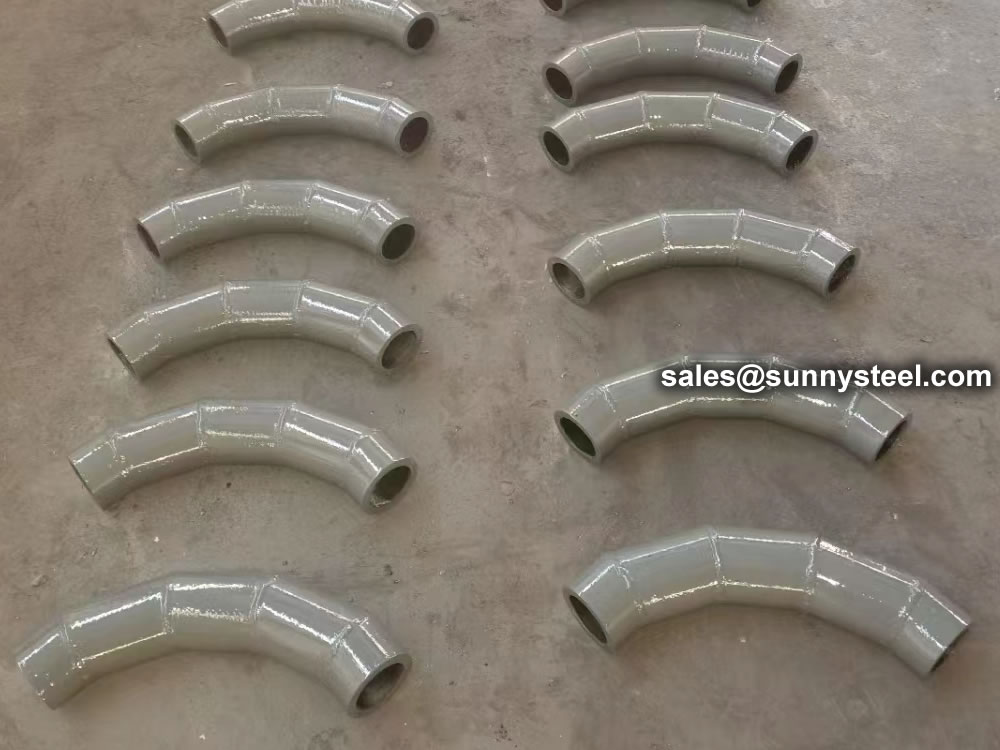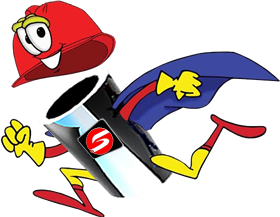Straight Pipes With Ceramic Lining
Alumina Ceramic Lined Straight Pipes prevents the pipes from wear and erosion.

KMTBCr28 bimetal wear-resistant elbow has increasingly become a more reliable anti-wear solution for material conveying systems.
KMTBCr28 bimetal wear-resistant elbow has increasingly become a more reliable anti-wear solution for material conveying systems in industries such as electric power, steel, chemical industry, and smelting because of its good wear resistance and reliable welding performance.
In order to find a balance between high wear resistance, weldability and impact resistance, KMTBCr28 bimetal composite wear-resistant elbow came into being and has been widely used since the late 1990s. KMTBCr28 bimetallic composite elbow can not only ensure the requirements of pipeline toughness, weldability and strength (compression resistance), but also ensure sufficient wear resistance. It is an ideal solution for wear-resistant pipelines for material transportation.
KMTBCr28 material characteristics Among alloy materials, the most ideal hardness and wear resistance are high chromium wear-resistant white cast iron and high-quality alloy wear-resistant cast steel (collectively referred to as superhard wear-resistant alloys). The hard phase of high chromium cast iron KMTBCr28 is M7C3 carbide, and its hardness reaches HV1500-1800, so it has good wear resistance, and because the structure of this Ka-type carbide is rod-shaped, it has a high wear resistance. toughness. And on the basis of traditional ingredients, rare metals and boron carbide hardening agents are added, which greatly increases the hardness and fatigue resistance of traditional products, making its wear resistance better than other products.
Heat treatment Usually, the metallographic structure of high chromium cast iron in the as-cast state is: austenite + martensite + carbide + pearlite. In order to develop the full hardness potential and optimum wear resistance of the material while at the same time imparting maximum toughness to the material, heat treatment is required. Usually the austenitizing temperature is about 960-980°C, and the temperature is kept for 2 to 4 hours (depending on the size of the ball). If 0.3-1.0% Cu is added, it must be kept for more than 6 hours to destroy the stability of austenite. Tempering treatment can be carried out in two temperature ranges, and tempering is carried out in the lower temperature range (200-300 ° C), the purpose of which is to temper the martensite obtained in quenching, thereby reducing fracture and Sensitivity to shock. In the state of high-impact abrasive wear, if you want to obtain austenite structure, under the ideal situation of chemical composition control, you only need to perform high-temperature aging treatment once to remove internal stress, which can meet the general needs. Conclusion Practical application and experiments show that it is suitable to produce grinding balls with high chromium cast iron materials, as long as attention is paid to the implementation of casting and heat treatment processes, the selection and control of chemical components, metallographic structure, and the matching of hardness and toughness during the production process, It can give full play to the efficiency of the material and meet the requirements of use.
The bimetal composite wear-resistant pipe can be connected by flanges, quick joints, direct welding, etc. Moreover, due to the high impact resistance of the composite pipe, when a local blockage occurs during the maintenance of the pipeline system, it can be knocked and hammered at will, and can also be cut, removed, and welded at will. The installation and maintenance are very convenient.

When you partner with Sunny Steel, you can stop worrying about meeting deadlines thanks to our responsive and timely service. You'll also say goodbye to unnecessary shopping around. Instead, you'll get white glove service from an expert who understands your needs and can get you the materials you need quickly.
